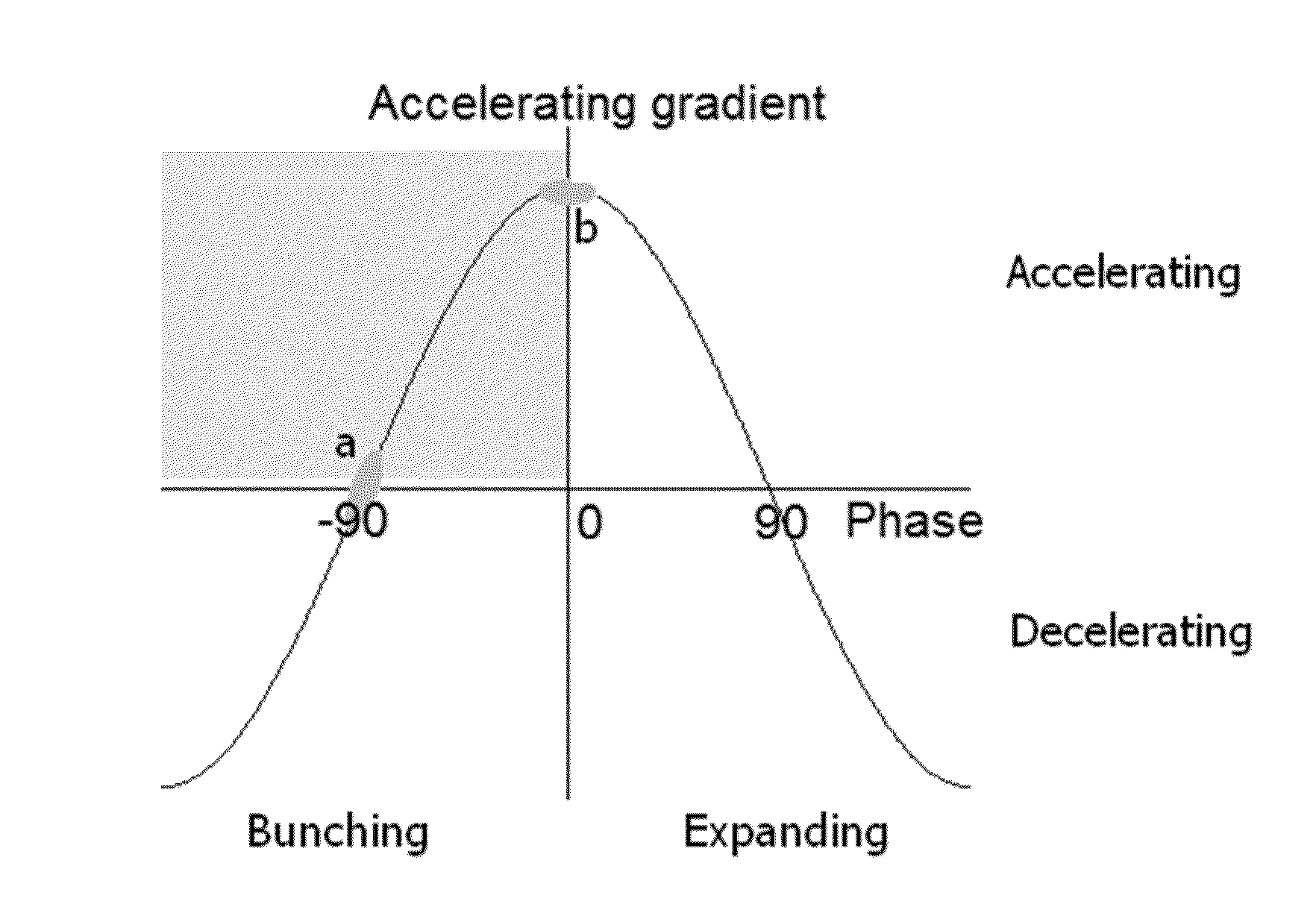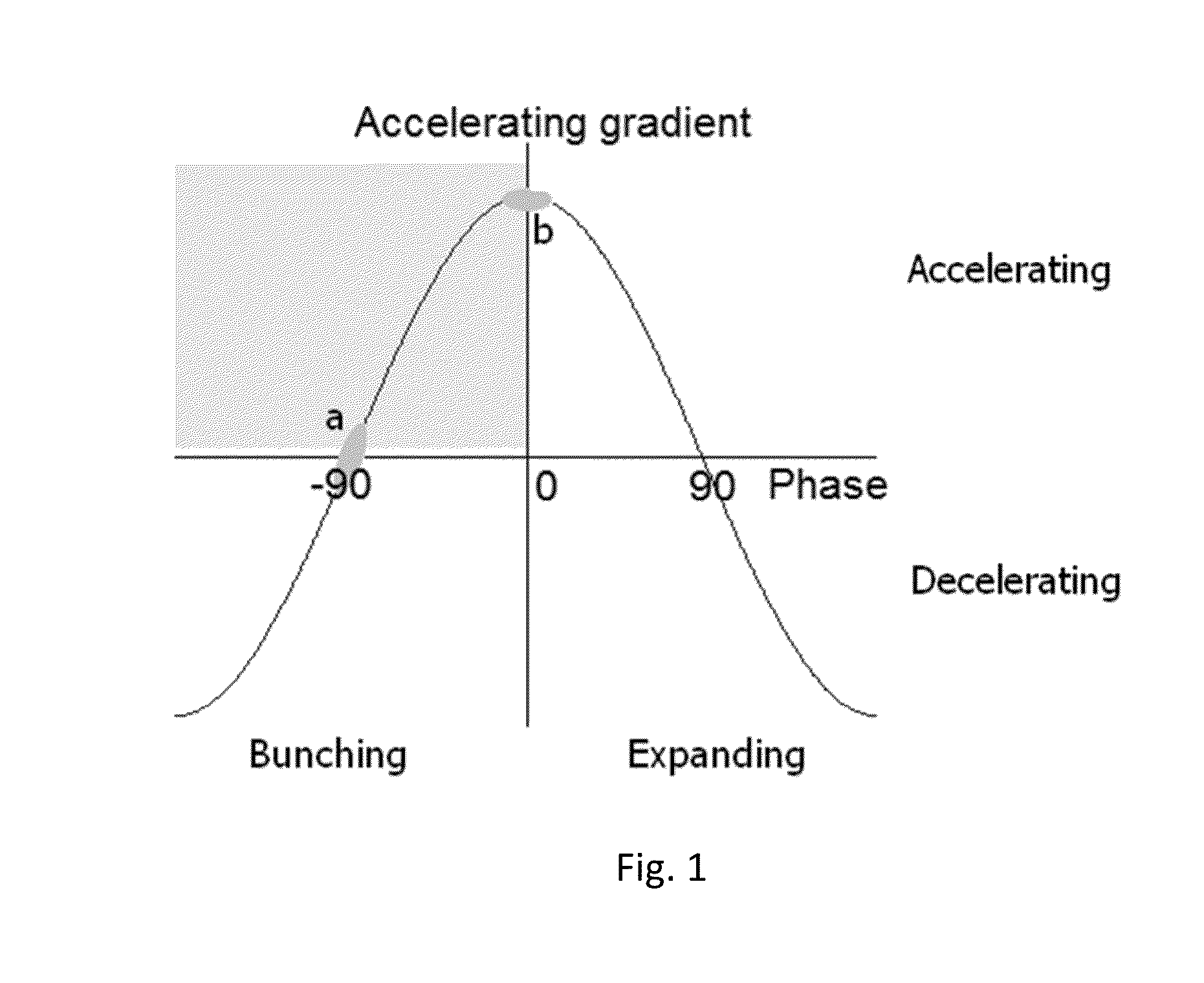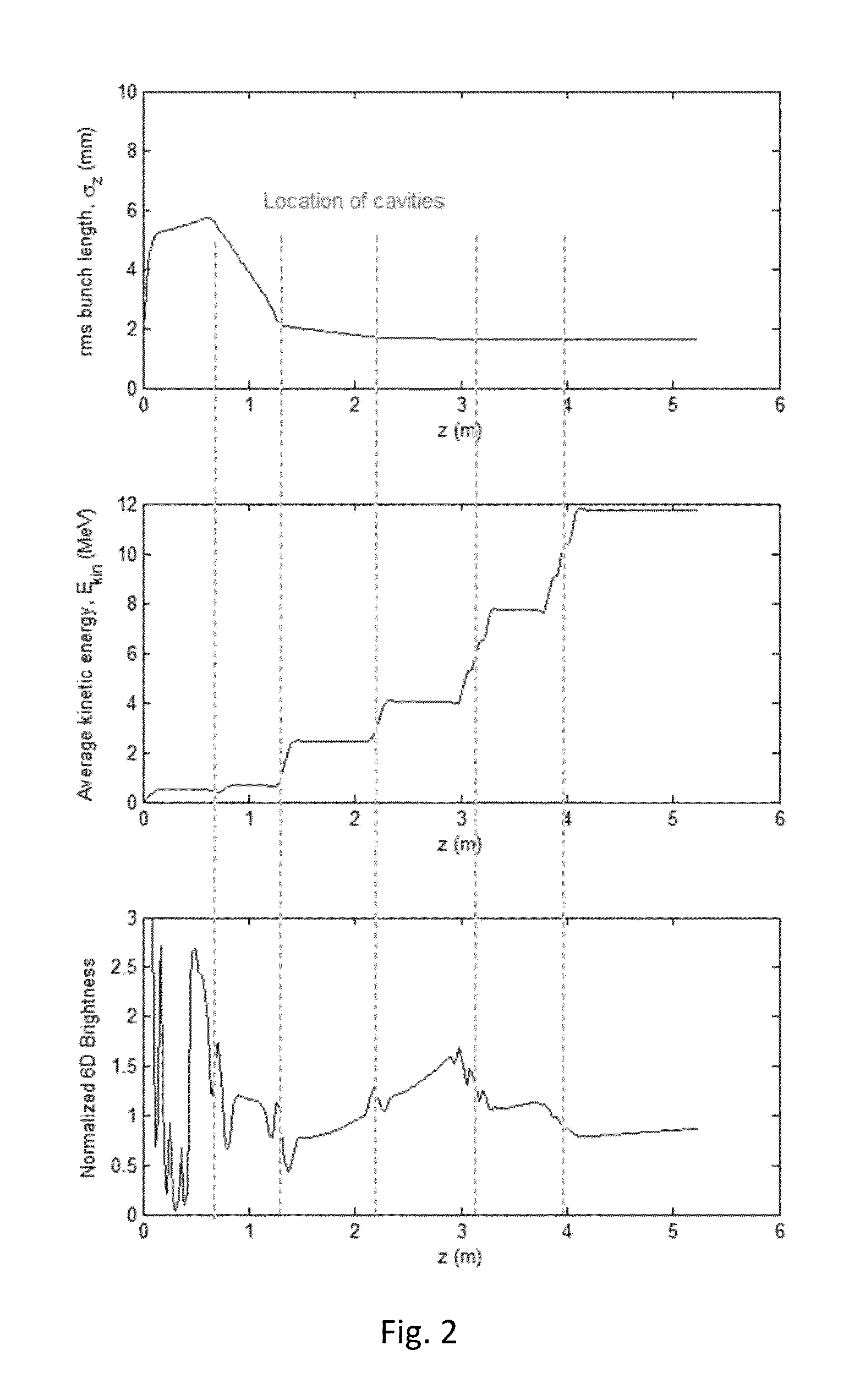Method for maximizing the brightness of the bunches in a particle injector by converting a highly space-charged beam to a relativistic and emittance-dominated beam
a particle injector and beam technology, applied in the field of particle beams, can solve the problem of not being able to operate particle accelerators in conventional ways
- Summary
- Abstract
- Description
- Claims
- Application Information
AI Technical Summary
Benefits of technology
Problems solved by technology
Method used
Image
Examples
Embodiment Construction
[0016]When the motion of particle bunches are severely space-charge dominated, it is no longer possible to use standard accelerator components in conventional ways to preserve the six-dimensional brightness of the bunch. Typically, RF structures are used to either bunch or accelerate the particle bunches independently, which modifies (to the 1 st order) 2D longitudinal phase space or 4D transverse phase space respectively. Conventional accelerators will have bunching cavities followed by separate accelerating cavities. In order to preserve the 6D brightness of highly space-charge dominated beams, RF cavities must be operated in a way such that both bunching and acceleration occur simultaneously and optimally so brightness is not destroyed. This process can be repeated in subsequent cavities with varying degrees of bunching / accelerating until the bunch is no longer space-charge dominated. The geometry, gradient and phase of the cavities are all required to optimally preserve bunch br...
PUM
 Login to View More
Login to View More Abstract
Description
Claims
Application Information
 Login to View More
Login to View More - R&D
- Intellectual Property
- Life Sciences
- Materials
- Tech Scout
- Unparalleled Data Quality
- Higher Quality Content
- 60% Fewer Hallucinations
Browse by: Latest US Patents, China's latest patents, Technical Efficacy Thesaurus, Application Domain, Technology Topic, Popular Technical Reports.
© 2025 PatSnap. All rights reserved.Legal|Privacy policy|Modern Slavery Act Transparency Statement|Sitemap|About US| Contact US: help@patsnap.com



